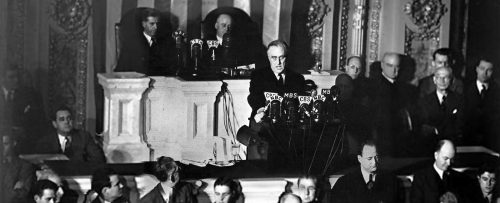
CWP Blog | CWP
Talk to Terrie: World War II’s Other Secret Weapon
April 26, 2022
April 26, 2022
CWP
CWP Blog
Readers of this blog know that I usually write about things related to the Cold War, nuclear weapons, and the facilities that built them. I thought I’d change things up for this blog and write about another secret weapon that helped win World War II.
I have a personal connection to this story. My father was part of this classified project. He regularly shared his experience near the Panama Canal zone during WWII with my family – and anyone else who was interested. This equipment has been declassified and can be seen every day on TV.
What was this secret weapon? Radar!
Radar is an acronym for radio detection and ranging. Now, radar has been around for many years before WWII began. Research into this began as early as the late 1800s. All major powers were involved in the research – the United States, Britain, Germany, Japan, and others. One of the first experiments in the United States that resulted in documenting the effects of radio transmission was performed in 1922. Albert H. Taylor and Leo Young with the U.S. Navy Aircraft Radio Laboratory set up a radio transmitter on one bank of the Potomac. On the other side was the radio receiver. They noticed that a ship produced interference with the radar beam when it sailed between the transmitter and receiver.
If all the major powers were working on using radar before WWII, why was it designated as a secret weapon? Basically, it was because each country’s research investigated the use of different radio wavelengths.
 Courtesy of U.S. Army, Chapter XII: Forging the Defenses of the Canal (army.mil)
Courtesy of U.S. Army, Chapter XII: Forging the Defenses of the Canal (army.mil)
The other reason radar was considered top secret was the joint development by the United States and Britain of the magnetron. The development of this vacuum tube allowed the radar technology to be small enough to fit on airplanes and ships.
My father was not happy about being posted to the jungles of Panama for the duration of the war. He was in his prime and wanted to fight for his country. This was important to him as a first-generation American. However, he still managed to save American lives despite not serving in an active war zone. He was at his post in the radar room when he made an unexpected observation. On the radar screen he saw that a squadron of U.S. planes was flying directly into a severe storm. He radioed either the pilots directly or the control tower (I don’t remember which) and warned them to turn around. They did and no lives or equipment were lost.
I would like to think that my father was the first to use radar to forecast the weather. The truth is that many other radar technicians and pilots took advantage of this discovery during WWII.
If you’d like to learn more about the use of radar during WWII, check out the documentary, Boca Raton: The Secret Weapon That Won WWII, from the South Florida television station WLRN.
